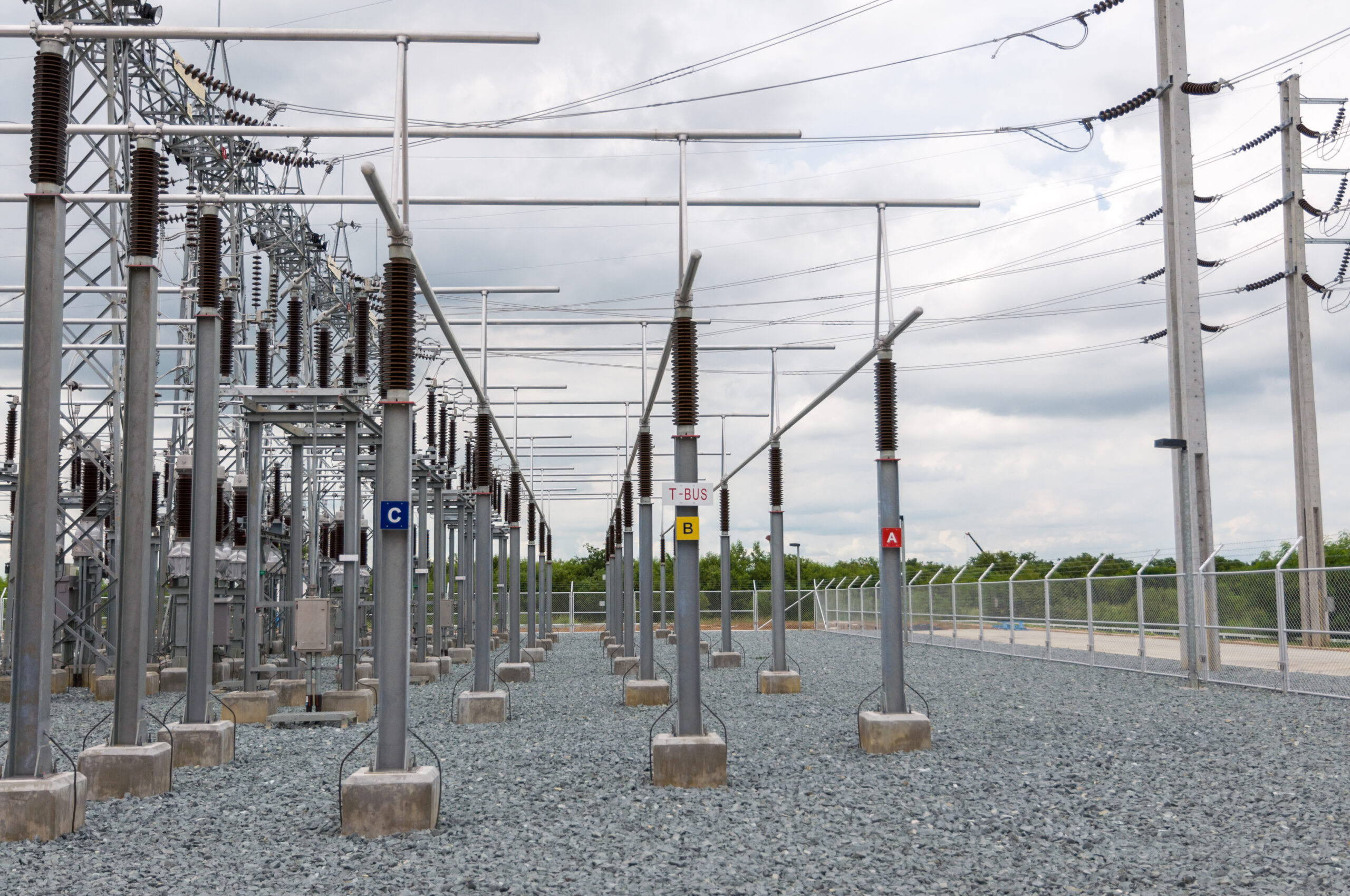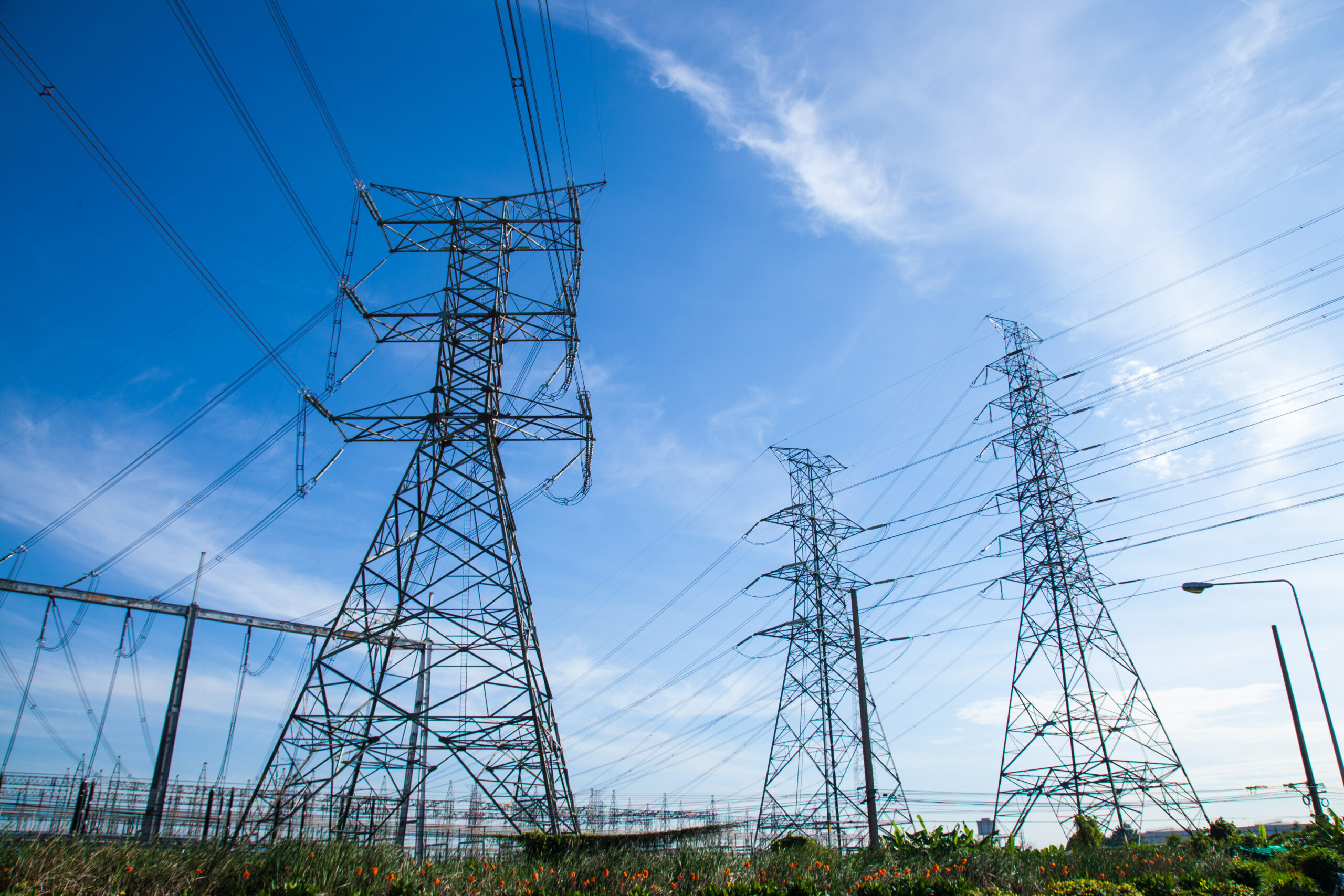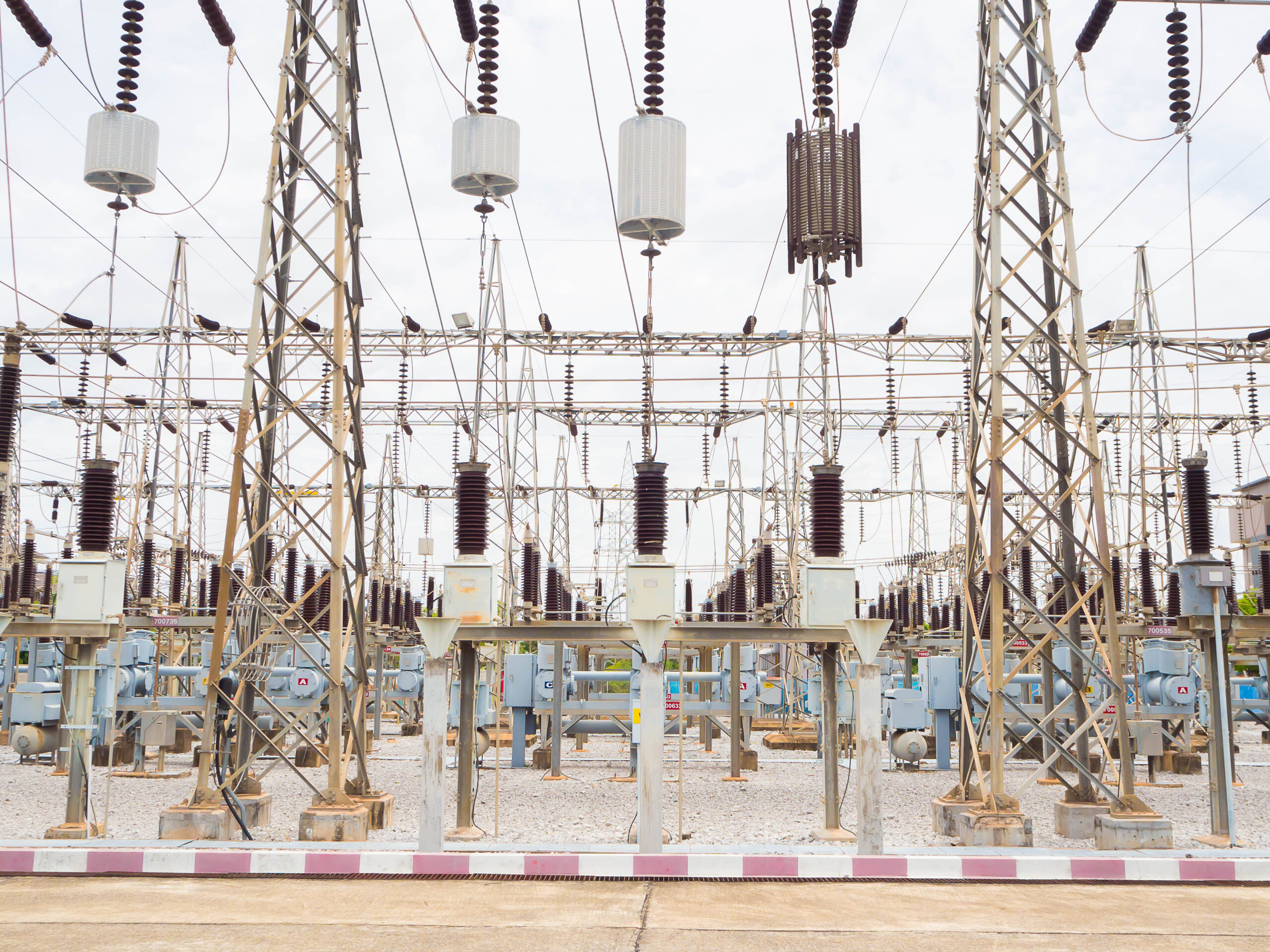Our Course
Power Substation Design & Engineering Course (11KV to 765KV)



Course Overview
Empower yourself to design High-Voltage substations(AIS & GIS) with confidence.
This in-depth Substation Design Course equips engineers, designers, and technicians with the essential knowledge and practical skills to excel in substation planning, design, and construction. Whether you’re new to the field or seeking to enhance your expertise, this program offers a comprehensive exploration of all aspects of substation design and engineering.
Key Learning Outcomes:
- Solid Foundation: Master the fundamental principles of substation design, from core concepts to advanced techniques.
- Expert-Led Learning: Gain insights from seasoned industry professionals who will guide you through lectures, case studies, and practical exercises.
- Industry Standards & Best Practices: Stay ahead of the curve by learning the latest industry standards and regulations, along with the most effective practices employed by leading organizations.
- Confident Design Skills: Upon completion, you’ll be equipped with the knowledge and skills to design and engineer substations of varying sizes and complexities.
Completing this course will charge you for:
- Expertise in Current Engineering Practice for Quality Deliverables
- Clear knowledge of Engineering work procedures & Ability to Work Independently on Projects
- Site Selection & Preparation
- Types of Substation & Layout
- Various Schemes of a Substation
- Major Components & Ratings
- Earthing & Lightning Protection System
- Introduction to Substation Automation
- Protection,Control and Safety
- Familiarize with International Industries Norms ( BIS,CBIP,CEA,NEC,IEC, IEEE, NFPA etc)
Who is the course for?
- Engineers who wants to switch their department/unit to Substation
- Engineering department/unit in their Company
- Engineers from state Electricity Boards, Power Utilities/ Corporations
- Graduate Engineers from Academic institutions
- Pre-Final Year & Final Year Engg. Students
- R & D organizations, Research Scholars
- Certified
- 90 Days
- 50 Students
- 100 Sections
- Martha Hudson
- 10 Modules
- 24 Downloadable Resources
- Fulltime Access
Engineering Specialists & Lecturers from






Electrical Engineer | Tesla Electrical | Ghana
The electrical substation course is an excellent course that helps you understand the concepts of electrical substation and also provides you with the practical knowledge needed to implement what has been taught to real life projects. I would recommend this course to any up and coming electrical engineer.

Grid Solutions Manager | IB Vogt | Greater Madrid
Excellent academy for the Substation course. The content is comprehensive and up-to-date, making it ideal for both professionals and those new to the field. The presentations are clear, well-structured, and the instructors demonstrate deep expertise. The practical approach helps to easily apply the knowledge gained. Highly recommended for anyone seeking high-quality training in the electrical sector.

Senior Electrical Engineer | L&T-S&L | India
I recently had the opportunity to enroll in the Electrical Engineering Substation training program offered by 50Hz Academia, an online platform specializing in engineering education. As someone seeking to deepen my understanding of substation fundamentals, I found the experience to be incredibly valuable and rewarding.First and foremost, the course content was extensive and well-structured. From the basics of substation components to advanced concepts in power distribution each module was meticulously crafted to provide a thorough understanding of the subject matter. The instructors demonstrated a profound knowledge of the material and presented it in a clear, concise manner, making even the most complex topics accessible to learners of all levels.One aspect of the training that particularly impressed me was the use of real-world examples and case studies. By applying theoretical concepts to practical scenarios, the instructors were able to illustrate the relevance and application of the material in industry settings. This approach not only enhanced my understanding of the subject but also fostered a deeper appreciation for the intricacies of substation design and operation.

Electrical Engineer | Tengizchevroil | Cape Town
Substation Design Course
Excellent course with top course presenters. Real world information is shared. Highly recommended.
Substation Layouts covered very well.
Substation Equipment also covered in detail and well explained.

Senior Electrical Engineer | Sedgman | Canada
I recently attended a course on substation design and engineering. The course covered a lot of material suitable for intermediate and advanced levels. We explored various subjects related to substation design, engineering principles, and safety rules.
One of the standout features was the focus on real-world applications. We looked at case studies and scenarios, which helped us understand how theoretical knowledge is applied in practice. The course also included sessions on single line and layout drawings, which are essential for substation design.
Overall, the course provided a solid foundation and practical skills for anyone interested in substation design and engineering.

Power Systems Engineer | KETRACO | Kenya
I recently enrolled for 50hz-academia’s Substation Design Course. The course instructors, who I found to be extremely knowledgeable, did a solid job and covered critical topics such as: –
1. Substation layout development in AutoCAD.
2. Primary Equipment Selection + their associated Engineering Calculations (useful handbooks/calc. sheets shared).
3. Cable, Battery and Earthing Design, and so much more.
The interactive course also takes a highly practical approach with instructors always making references to real-life SLD’s, technical specifications, layouts, equipment assembly drawings and standards (IEC, IEEE), etc.
I highly recommend it for aspiring substation design engineers.

Electrical Engineer | AMGD | United Arab Emirates
I recently attended the Substation Design course with 50Hz Academia, and it was a game-changer for me as an Electrical LV/ELV specialist. The instructors were knowledgeable and used real-world examples to cover every aspect of substation design and engineering.
The course covered all components of substation design.
Real-world examples made the learning experience valuable.
The training gave me the confidence to deliver complete substation designs and provide design support.
I highly recommend 50Hz Academia’s Substation Design course to electrical engineers looking to upgrade their skills. Thank you, 50Hz Academia, for providing this valuable training opportunity!

Directeur technique | VDN Group | France
I highly recommend 50 HZ Academy for anyone looking to deepen their knowledge in HV substation design. The skills and insights gained from this training will undoubtedly enhance my professional capabilities.
The trainers were knowledgeable and approachable, always ready to clarify doubts and share real-world insights. The hands-on exercises and case studies helped bridge the gap between theory and practice, making the learning process engaging and relevant.

Electrical QA/QC Engineer | GPEC | Riyadh Region
The substation design course proved to be an exceptional learning experience, providing a concise yet through exploration.
Training experience was Outstanding.
Course Modules
Overview: This module covers the foundational aspects of substations, including their role in electrical networks, the different types and configurations of substations, and considerations for optimal location.
Topics Covered:
- Introduction to Electrical Networks:
- Overview of how electrical networks function and the components involved.
- The role of substations as key nodes within electrical networks.
- Types of Substations:
- Classification of substations based on their position within the network (e.g., transmission, distribution).
- Various substation types based on voltage levels and specific operational functions.
- Substation Configurations:
- Different configurations of High Voltage (HV) substations.
- Importance and interpretation of typical Single Line Diagrams (SLDs).
- Location Optimization:
- Criteria and methods for selecting the optimal location for substations.
- Data requirements for industrial loads necessary for substation design.
- Assumptions for residential and commercial load requirements.
- Environmental and Regulatory Considerations:
- Addressing environmental challenges in substation placement.
- Mitigation measures to reduce environmental impact.
- Understanding and complying with planning permits and zoning regulations.
- Introduction to Electrical Networks:
Overview:
This module delves into the detailed design aspects of substations, including various bus-bar switching schemes, the development of Single Line Diagrams (SLDs), and layout planning and coordination.
Topics Covered:
- Bus-Bar Schemes:
- Introduction to different bus-bar schemes used in substations.
- Detailed examination of different busbar switching schemes like the
- One and Half Breaker Scheme
- Ring Bus Bar
- Main & Transfer Bus bar
- Double Main Bus Bar
- Single Bus Bar Scheme
- Double Main & Transfer Bus Scheme.
- Single Line Diagrams (SLDs):
- Basics of creating and interpreting Single Line Diagrams.
- Step-by-step development of detailed SLDs.
- Primary Equipment:
- Overview of primary equipment utilized in substations and their roles.
- Layout Development:
- Developing layouts from Single Line Diagrams.
- Coordination between SLDs, plan views, and sectional views.
- Considerations for structure loading layout.
- Importance of maintaining sectional and safety clearances in layout design.
- Cable Trench Layout:
- Developing and planning cable trench layouts.
- Electrical Key Diagrams (EKD) & Bill of Materials (BOM):
- Introduction to Electrical Key Diagrams and their significance.
- Preparation and development of Bill of Materials for substation projects.
Additional Content:
- Video Lecture: 48-minute comprehensive video covering detailed design concepts.
Reading Material: 2-minute quick read to reinforce learning points.
Overview: This module focuses on the critical aspects of selecting and sizing various switchyard equipment and understanding their ordering specifications.
Topics Covered:
- Selection & Sizing of Busbars:
- Criteria for choosing appropriate busbars.
- Calculations for sizing busbars based on current capacity and thermal limits.
- Selection & Sizing of Disconnectors (Isolators) & Earth Switches:
- Factors in selecting isolators and earth switches.
- Sizing requirements based on operational parameters and safety standards.
- Selection & Sizing of Circuit Breakers:
- Key considerations for selecting circuit breakers.
- Sizing circuit breakers based on fault current and operational duties.
- Selection & Sizing of Instrument Transformers (CT, VT/PT, CVT):
- Choosing Current Transformers (CT) and Voltage Transformers (VT/PT).
- Sizing criteria for instrument transformers according to system requirements.
- Selection & Sizing of Lightning Arresters/Surge Arresters:
- Guidelines for selecting lightning arresters.
- Sizing lightning arresters based on system voltage and protection levels.
- Selection & Sizing of Power Transformers:
- Criteria for selecting power transformers.
- Sizing power transformers considering load requirements and system configuration.
- Selection & Sizing of Shunt Reactors:
- Factors influencing the selection of shunt reactors.
- Sizing shunt reactors to manage reactive power and voltage stability.
- Selection & Sizing of Capacitor Banks:
- Selecting capacitor banks for power factor correction.
- Sizing capacitor banks based on reactive power compensation needs.
- Selection & Sizing of Auxiliary Transformers:
- Criteria for choosing auxiliary transformers.
- Sizing auxiliary transformers to support substation auxiliary systems.
- Selection & Sizing of Wave Traps:
- Guidelines for selecting wave traps.
- Sizing wave traps for power line carrier communication systems.
- Selection & Sizing of Bus Support Insulators:
- Choosing appropriate bus support insulators.
- Sizing bus support insulators for mechanical and electrical stability.
- Selection & Sizing of Strain Insulators:
- Criteria for selecting strain insulators.
- Sizing strain insulators to withstand mechanical loads and electrical stress.
- Selection & Sizing of Busbars:
Overview: This module addresses the essential engineering calculations required for substation design, detailing their significance and impact on overall substation performance and safety.
Topics Covered:
- Short Circuit Force Calculation:
- Methods for calculating the mechanical forces exerted during short circuits.
- Impact of short circuit forces on equipment and structural integrity.
- Pinch Force Calculation
- Determining the forces exerted at pinch points.
- Relevance of pinch force calculations in mechanical design and safety.
- Drop Force Calculation
- Determining the forces causing drop force.
- Relevance of drop force calculations in mechanical design and safety.
- Sag and Tension Calculation:
- Techniques for calculating sag and tension in overhead conductors.
- Importance of these calculations for safe and efficient conductor installation.
- Wind Force Calculation:
- Procedures for determining wind forces on substation structures.
- Effects of wind forces on stability and design requirements.
- Bus & Conductor Selection Sizing:
- Criteria for selecting and sizing busbars and conductors.
- Ensuring adequate current-carrying capacity and thermal performance.
- Short Circuit Forces (SCF) for Equipment & Cantilever Strength Calculation:
- Calculations for assessing the strength of cantilever structures.
- Ensuring cantilever structures can withstand operational loads and forces.
- Evaluating short circuit forces on equipment.
- Checking cantilever strength to ensure structural integrity under fault conditions.
- Earthing Calculation:
- Procedures for designing effective earthing systems and earthing mat .
- Importance of proper earthing for safety and equipment protection.
- Earthing Bill of Material
- Earthing Layout
- Direct Lightning Spike Protection Calculation:
- Calculating the requirements for direct lightning spike protection.
- Ensuring adequate protection against lightning strikes.
- DSLP Bill of Material
- DSLP Layout
- Auxiliary Transformer Sizing:
- Criteria for selecting and sizing LT transformers.
- Ensuring transformers meet load requirements and efficiency standards.
- Battery & Charger Sizing:
- Calculations for determining the size of batteries and chargers.
- Ensuring adequate backup power and charging capacity.
- Cable Sizing:
- Methods for selecting and sizing cables.
- Ensuring cables can handle the required current without excessive voltage drop.
- Illumination Calculation:
- Techniques for calculating illumination levels.
- Ensuring adequate lighting for safety and operational efficiency.
- Short Circuit Force Calculation:
Overview: This module covers the critical aspects of cable sizing and selection for both single-phase and three-phase systems. It includes detailed calculations, selection criteria, and relevant standards to ensure proper cable installation and performance.
- Load Details Calculation:
- Calculating load requirements for feeders and motors.
- Determining the total load to be supported by the cable system.
- Cable Type and Construction Features:
- Overview of different cable types and their construction.
- Features to consider when selecting cables for specific applications.
- Cable Impedances:
- Understanding cable impedance characteristics.
- Importance of impedance in cable selection and performance.
- Site Installation Conditions:
- Assessing environmental and installation conditions.
- Impact of site conditions on cable selection and performance.
- Base Current Ratings of Feeders:
- Determining the base current ratings for feeder cables.
- Ensuring feeders are appropriately rated for their intended load.
- Cable Selection Based on Installed Current Ratings:
- Selecting cables based on their installed current ratings.
- Ensuring cables can handle the operational current safely.
- Calculation of Voltage Drop:
- Methods for calculating voltage drop in cables.
- Importance of maintaining voltage levels within acceptable limits.
- Maximum Permissible Voltage Drop by ANSI and IEC Standards:
- Understanding the maximum permissible voltage drop according to ANSI and IEC standards.
- Ensuring compliance with these standards in cable selection.
- Calculating Maximum Cable Length Due to Voltage Drop:
- Determining the maximum cable length allowed to maintain acceptable voltage drop levels.
- Ensuring efficient power delivery over distance.
- Short Circuit Temperature Rise Calculation of Cable:
- Calculating the temperature rise in cables during short circuits.
- Ensuring cables can withstand short circuit conditions without damage.
- Selection of Minimum Cable Size Due to Short Circuit Temperature Rise:
- Selecting the minimum cable size to handle the temperature rise during short circuits.
- Ensuring safety and integrity of the cable system under fault conditions.
- Reference Standards:
- IEC 60502-2: Power cables with extruded insulation and their accessories for rated voltages from 6kV up to 30kV.
- IEC 60364-5-54: Selection and erection of electrical equipment – Earthing arrangements, protective conductors, and protective bonding conductors.
- IEC 60364-5-52: Selection and erection of electrical equipment – Wiring systems.
- IS 1255: Code of practice for installation and maintenance of power cables up to and including 33 kV rating.
- IS 7098 (Part 2)-1985: Specification for cross-linked polyethylene insulated PVC sheathed cables – Specification (3.3kV to 33kV).
- Load Details Calculation:
Overview: This module covers the critical aspects of earthing design and calculations necessary for substations and power plants. It includes safety considerations, design procedures, measurements, and adherence to relevant standards.
Topics Covered:
- Design Procedure:
- Detailed procedure for designing effective earthing systems.
- Steps involved in the development and implementation of earthing designs.
- Step Voltage and Touch Voltage:
- Understanding the concepts of step voltage and touch voltage.
- Importance of these voltages in ensuring personnel safety.
- Selection of an Earthing Conductor and Connection of an Electrode:
- Criteria for selecting appropriate earthing conductors.
- Methods for connecting electrodes to achieve reliable earthing.
- Calculation of Maximum Step and Mesh Voltages:
- Techniques for calculating maximum permissible step and mesh voltages.
- Ensuring compliance with safety standards to protect personnel.
- Refinement of Preliminary Design:
- Methods for refining initial earthing designs.
- Incorporating additional data and feedback to improve design accuracy.
- Application of Equations for Em and Es:
- Applying relevant equations for calculating maximum step (Em) and mesh (Es) voltages.
- Ensuring accurate and reliable earthing system performance.
- Measurement of Earth Resistivity:
- Procedures for measuring the resistivity of the earth at the site.
- Importance of accurate earth resistivity measurements in earthing design.
- Measurement of Earth Electrode Resistance:
- Techniques for measuring the resistance of earth electrodes.
- Ensuring that electrode resistance meets design and safety criteria.
- Earthing Arrangements for Combined Protective and Functional Purposes:
- Designing earthing systems that provide both protective and functional grounding.
- Ensuring comprehensive earthing solutions for enhanced safety and performance.
- Standards Reference:
- IEEE Std 80-2000: Guide for Safety in AC Substation Grounding.
- BS 7430: Code of practice for earthing.
- IS 3043: Code of practice for earthing.
- Design Procedure:
Overview: This module focuses on the critical aspects of sizing battery banks and battery chargers, including the sizing of Uninterruptible Power Supplies (UPS). It covers the calculations and considerations necessary to ensure reliable backup power systems in substations and power plants.
Topics Covered:
- Sizing of Battery Bank:
- Methods for determining the required capacity of battery banks.
- Factors influencing battery bank sizing, such as load requirements and discharge rates.
- Sizing of Battery Charger:
- Procedures for selecting and sizing battery chargers.
- Ensuring chargers can adequately maintain and recharge the battery bank under various conditions.
- Sizing of UPS:
- Criteria for sizing Uninterruptible Power Supplies.
- Ensuring UPS systems can support critical loads during power interruptions.
- Diagram of Duty Cycle:
- Creating and interpreting duty cycle diagrams for battery systems.
- Importance of duty cycles in determining battery performance and lifespan.
- Number of Cell Calculation:
- Calculating the number of cells required for a specific battery bank configuration.
- Ensuring proper voltage and capacity to meet system requirements.
- Types of Loads:
- Identifying and categorizing different types of loads (e.g., continuous, intermittent, critical).
- Impact of load types on battery and charger sizing.
- Standards Reference:
- IEEE 485: Guide for the sizing of large lead storage batteries for generating stations and substations.
- Sizing of Battery Bank:
Overview: This module provides a comprehensive understanding of control and relay protection systems used in substations and power transmission. It covers various types of protection schemes, design considerations for panel schematics, and the selection of Bill of Materials (BOM).
Topics Covered:
- Different Types of Protection:
- Line Protection:
- Understanding the principles and applications of line protection.
- Distance Protection:
- Overview of distance protection mechanisms and their importance in fault detection.
- Busbar Protection:
- Detailed explanation of busbar protection schemes.
- Differential Protection:
- Working principles of differential protection and its application in power systems.
- Line Protection:
- Design of Panel Schematics:
- Steps for designing schematics for protection panels.
- Key components and layout considerations in schematic design.
- Selection of Bill of Materials for the Panel:
- Criteria for selecting and listing the necessary components for protection panels.
- Ensuring the BOM aligns with design requirements and standards.
- Standard Protection Schemes for Substation and Transmission Line:
- Overview of commonly used protection schemes in substations.
- Protection schemes tailored for transmission lines.
- Ensuring reliability and safety through standard protection practices.
- Different Types of Protection:
Overview: This module provides an in-depth understanding of Power Line Carrier Communication (PLCC), SCADA architecture, and the benefits of substation automation systems. It covers the design considerations for SCADA architecture, selection of PLC and communication protocols, and the integration of substation automation systems with IEC 61850 standards.
Topics Covered:
- PLCC Overview:
- Introduction to Power Line Carrier Communication (PLCC) technology.
- Applications and benefits of PLCC in power systems communication.
- Detailed examination of PLCC technology, its working principles, and applications.
- SCADA Architecture Design:
- Principles and considerations for designing SCADA architecture in substations.
- Components and their roles in SCADA systems.
- Selection of PLC and Communication Protocols:
- Criteria for selecting Programmable Logic Controllers (PLC) and communication protocols.
- Compatibility with existing systems and requirements.
- Benefits of Substation Automation System:
- Advantages of implementing substation automation systems.
- Improvements in efficiency, reliability, and maintenance.
- Substation Automation System with IEC 61850:
- Overview of the IEC 61850 standard for substation automation.
- Integration of IEC 61850 into SCADA architecture and communication protocols.
Overview: This module provides practical examples and case studies for the sizing and selection of substation equipment. It includes hands-on practice using standard Excel sheets for sizing calculations of various equipment commonly found in substations.
Topics Covered:
- Practical Examples and Case Studies:
- Real-world examples and case studies illustrating the sizing and selection process for substation equipment.
- Analysis of different scenarios and considerations in equipment sizing.
- Hands-On Practice with Excel Sheets:
- Utilizing standard Excel sheets for sizing calculations of substation equipment.
- Step-by-step guidance on using Excel formulas and templates for accurate calculations.
Additional Content:
- Interactive Exercises:
- Engaging exercises to reinforce learning and application of sizing and selection concepts.
- Opportunities for learners to practice calculations and analyze results.
- Discussion Forums:
- Online forums for learners to discuss case studies, share insights, and ask questions.
- Facilitated by instructors to encourage collaboration and peer learning.
Benefits:
- Practical Application: Learners gain hands-on experience in sizing and selecting substation equipment through real-world examples and Excel-based exercises.
- Enhanced Understanding: Case studies provide context and practical insights into the decision-making process involved in equipment sizing.
- Skill Development: Practice with Excel sheets improves proficiency in using tools commonly employed in engineering calculations.


